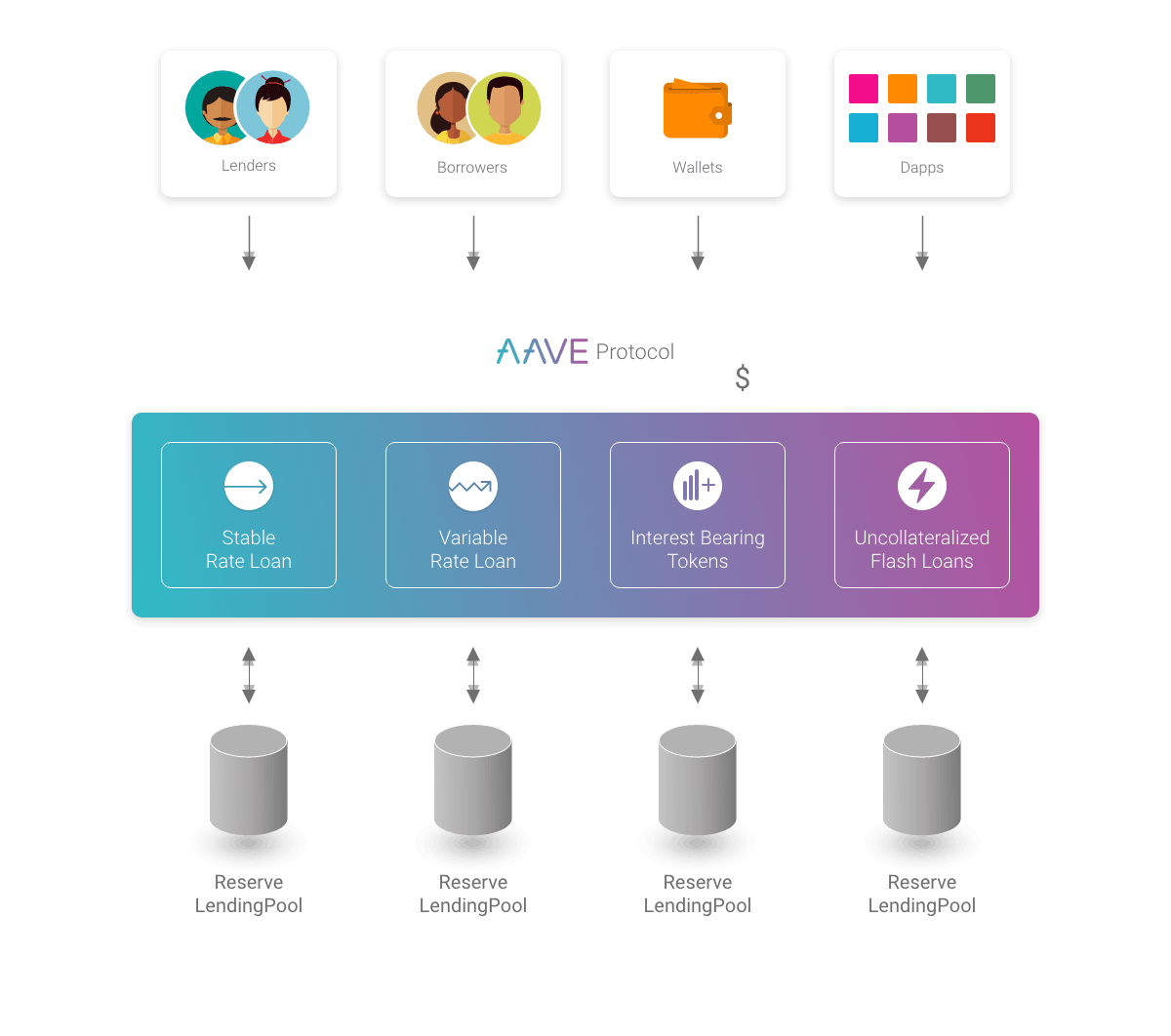Aave Delegates' Gas Usage
How much gas was used by delegates voting in Aave in the past 90 days? In the past 180? How much gas on average is spent by voters in a single vote?
Aave is a decentralized cryptocurrency platform that allows users to borrow and lend crypto. Aave uses smart contracts to automate the process, with preset rules on how funds are distributed, how collateral is handled, and how fees are assessed. Aave specializes in overcollateralized loans, meaning that users will need to deposit crypto worth more than the amount that they wish to borrow. This protects lenders from losing money due to loan defaults and allows the Aave protocol to liquidate the collateral if it drops too much in value.
Aave also offers a native crypto token (AAVE) that can be traded on most exchanges or staked in the Aave platform to earn interest. Staking is how crypto miners earn rewards for validating transactions on a proof-of-stake blockchain like the one that underlies Aave.
Aave is an Ethereum-based protocol that offers automated crypto loans. Users can deposit cryptocurrency as collateral and borrow other cryptocurrencies, up to a certain percentage of the collateral value. This is known as the loan-to-value (LTV), and Aave limits the borrowed amount to 80% of the current value of the pledged collateral.
Aave uses smart contracts, which are programs that automate the borrowing process by calculating the loan terms, collecting the deposited collateral, and distributing the cryptocurrency being borrowed.
Smart contracts are what enable Aave to operate without the need for a third-party intermediary. [1]

Aave Lending
To lend crypto on Aave, users can connect a digital wallet to the platform and search through a list of assets that support deposits. Deposits offer a fixed annual percentage yield (APY) that is paid out in the same asset in which it is deposited. For example, if a user deposits Ether (ETH), the interest is paid out in ETH. The Aave exchange offers access to several cryptocurrencies, including:
- Ether (ETH)
- Dai (DAI)
- Aave (AAVE)
- U.S. Dollar Coin (USDC)
- Tether (USDT)
Supplying crypto to Aave adds your tokens to liquidity pools, which are used for lending to other borrowers. The interest rate paid by borrowers goes to the lending pools, with a percentage of those fees being paid out to depositors. [2]
Aave Borrowing
To borrow crypto on the Aave platform, users will need to first supply crypto on the platform as collateral. Once the collateral is deposited into the liquidity pools, users actually earn interest on these deposits. Once funds are deposited, users can search through the supported crypto assets to borrow, and Aave automatically calculates how much they can borrow. Because each crypto asset has different characteristics, Aave dynamically calculates the available amount based on the value of the deposited crypto, the value of the asset, and the volatility of the asset. Once the crypto is chosen, users can confirm the transaction, and the crypto will be deposited into their connected wallet. All Aave loans are overcollateralized, meaning that the value of the assets deposited will always exceed the value of the crypto loan. [For more information]
In this dashboard, Aave Delegates are individuals or entities that represent a group of Aave protocol users and participate in governance decisions related to the Aave protocol. In order to find the delegates, we used the "ETHEREUM.CORE.FACT_EVENT_LOGS" table and filtered the "event_name" column with "DelegateChanged." For a better understanding of the situation, the Aave token or stake Aave token transactions are separated by these two contract addresses. ('0x7fc66500c84a76ad7e9c93437bfc5ac33e2ddae9' for Aave and '0x4da27a545c0c5b758a6ba100e3a049001de870f5' for stake Aave). Is this a self-delegation or not, and is this delegation for a vote or a proposition? also investigated.
Gas usage refers to the amount of computational power required to execute a transaction on the Ethereum network. In the context of Aave Delegates, gas usage refers to the amount of gas required to execute various governance functions, such as voting or proposing changes to the protocol. We use the tx hash from the above table to investigate the gas price and gas used from "ethereum.core.fact_transactions" in the 90- and 180-day periods. Then network congestion and its impact on gas prices were investigated. and finally, from "ethereum.aave.ez_votes" all vote transactions are extracted, and then the gas price and gas used by these transactions are extracted from "ethereum.core.fact_transactions". At the conclusion, we estimated the reason behind gas price change and how Aave could control it for balance and a stable governance policy.